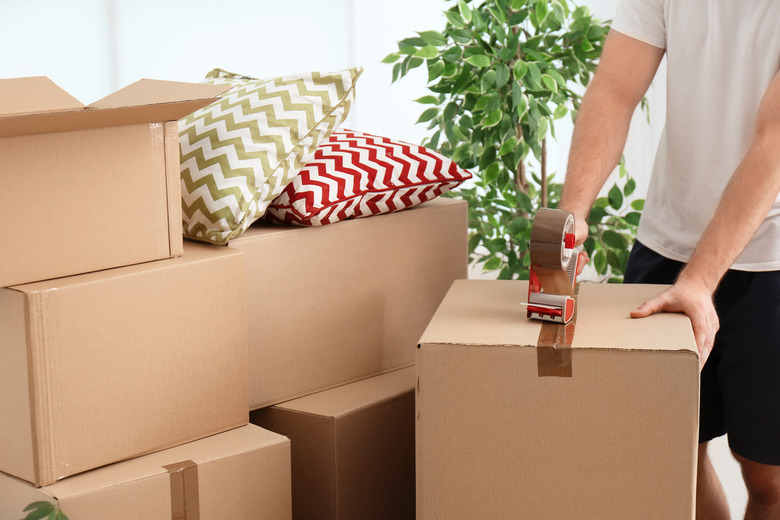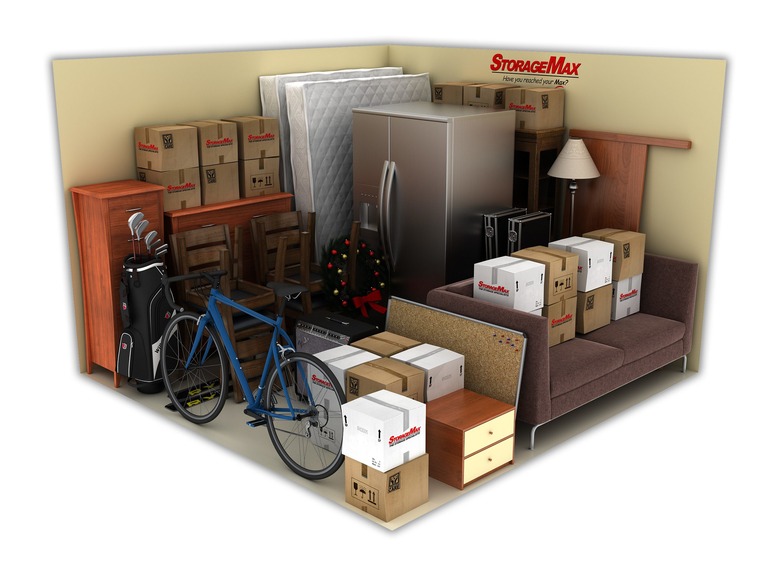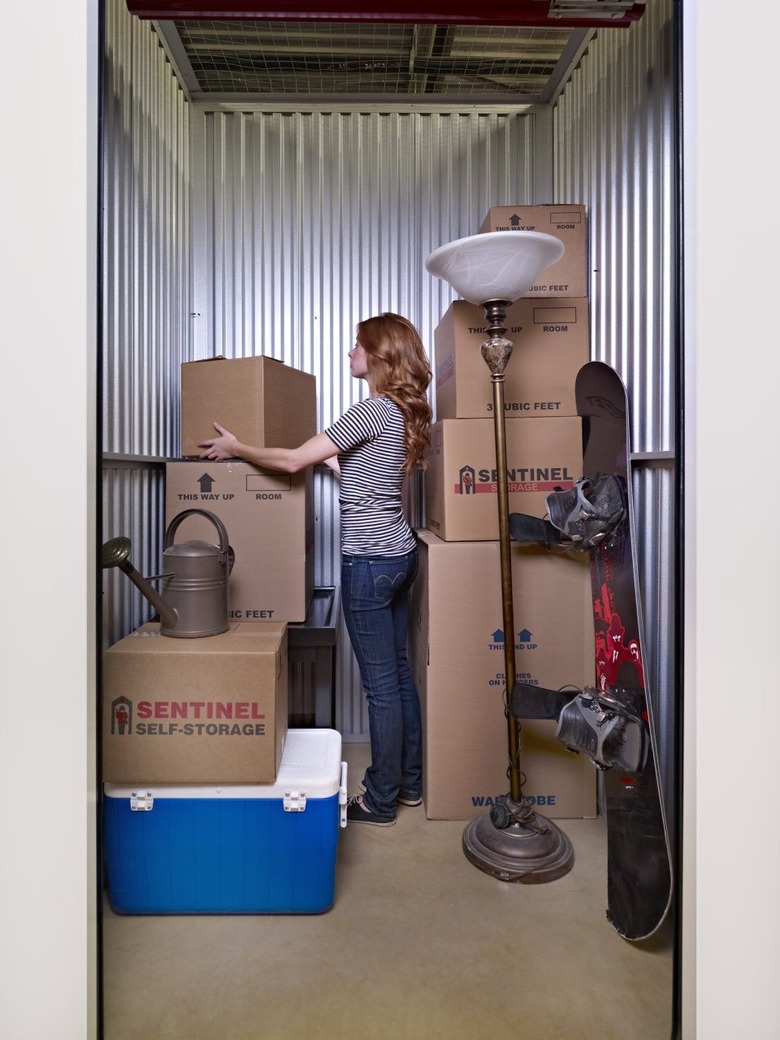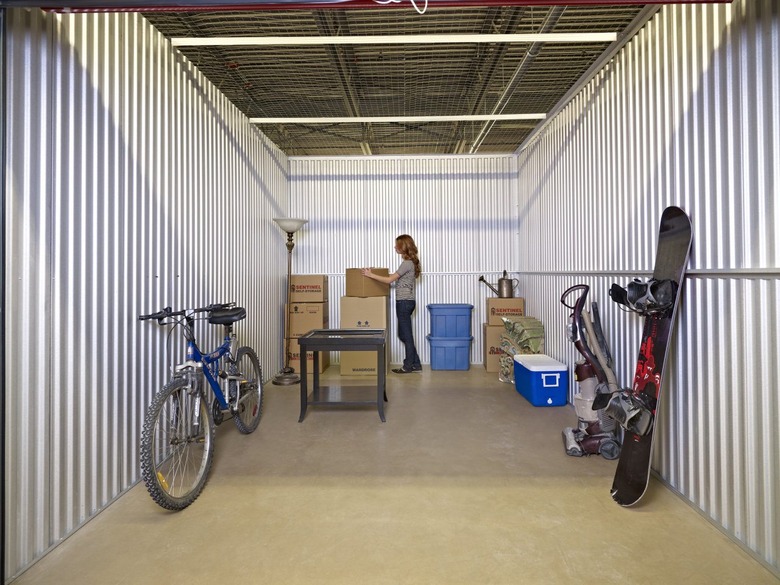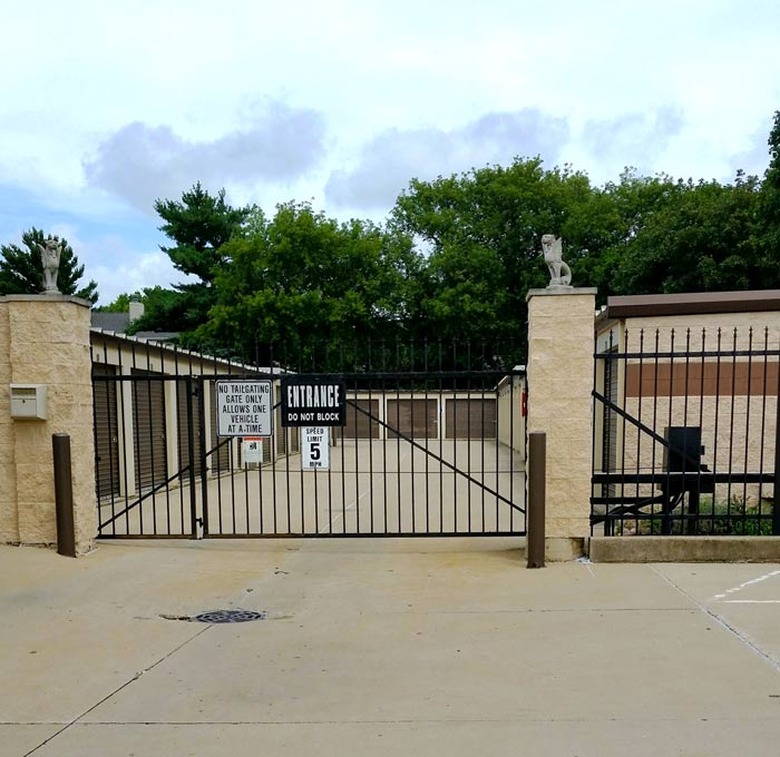What Size Storage Unit Do I Need?
Choosing the size of a rented storage space is a little like buying paint: You don't want to buy too much, but you absolutely have to have enough. But accurately estimating the unit size you need can be tricky, even if you aren't spatially challenged. It's hard for anyone to visualize all of their stuff puzzle-fitted into a cubic form—without a lot of expensive air space mixed in. There are basic, tried-and-true guidelines that can help. And if you have the space for a test-run, you can always stack up your storage items and measure the lot for a truly hands-on estimate.
Basic Storage Unit Sizing
Storage unit facilities typically offer a standard range of unit sizes, from 5 x 5 feet at the small end to 10 x 30 feet at the large end. For each size, there is a practical example of how much stuff will fit:
- 5 x 5 feet: This unit is about the size of a large reach-in bedroom closet. It can hold clothes, seasonal items, documents and memorabilia, books, camping gear and other smallish items. It's too small for most furniture; even small furniture will eat up its space pretty quickly. However, if you need it to hold a sofa or love seat in a pinch, you can stand the sofa on its end.
- 5 x 10 feet: Similar to a good-size walk-in closet, a 5 x 10 is said to be appropriate for storing the contents of a studio apartment, a dorm room or a small one-bedroom. That said, if you have a full or queen-size bed, a couch and a dining set in addition to all your other stuff, this size might not cut it.
- 10 x 10 feet: 100 square feet is about the size of a small bedroom or about half of a single-car garage. This can accommodate a one-bedroom apartment or, for those with larger abodes, all of the furniture from a living or family room or two standard bedrooms (or one large master bedroom). You'd also probably have a lot of space for tucking boxes and smaller items into the spaces in and around the furniture.
- 10 x 15 feet: Think of this size as a super-sized 10 x 10: Instead of holding the contents of two bedrooms, you can probably fit three, or the furnishings from two living areas plus plenty of smaller extras.
- 10 x 20 feet: Now you're looking at a full single-car garage. Carefully packed, this unit size is advertised as suitable for a three-bedroom house with pretty much everything but the kitchen sink. It can also fit most cars, along with a few feet of space at the end.
- 10 x 30 feet: This is the largest unit size offered at most storage facilities. It's suitable for storing virtually everything in a five-bedroom house, or, for motor fans, a boat, car or several small vehicles, such as ATVs, snowmobiles, lawn tractors, etc. This would be a 1 1/2-car garage, if there were such a thing.
How Tall Are Storage Units?
The standard height of a storage unit is 8 feet. Large storage buildings housing many units often are much taller, of course, but the units themselves typically are capped off with wire fencing for security and ventilation. This height is easy to visualize because a standard home (especially an older home) or apartment has ceilings just a few inches under 8 feet. But since people don't normally stack household times all the way to their ceilings, the height of a storage unit can be surprisingly tall when your goal is to cram things in.
If you want to know the cubic volume of a storage unit, simply multiply the area (width x depth) times the height:
- A 5 x 5 unit has a volume of 200 cubic feet (5 x 5 x 8 = 200).
- A 10 x 30 unit has a volume of 2,400 cubic feet (10 x 30 x 8 = 2,400)
Sizing a Storage Unit By Measuring or Packing
If the numbers and standard space estimates are too vague for your liking, you can always pack up your stuff as efficiently as possible and measure it—width, depth and height. There are two ways to do this. You can pack everything in an open garage space or even in a room in your house or apartment. It helps to do this in a corner so you can stack things against the walls. And don't forget to go up to the ceiling (assuming it's around 8 feet).
The second method is to load up a moving truck and measure the truck's interior dimensions. Many rental moving trucks are close to 8 feet tall, which makes the height easy to visualize.
Do You Need Extra Storage Space?
There are two common reasons why people want more storage space than they currently need. The more obvious reason is that you simply may want to add items in the future. If you stuff a small space to the gills and later end up with more stuff to store, you'll either have to adopt a one-in, one-out policy or you'll have to move everything to a larger unit.
The other reason to go somewhat bigger than you really need is to provide some space for movement inside the unit. If you'll be using the space as a sort of a storage annex that you'll visit frequently for deposits and withdrawals, a little elbow room can be a valuable convenience. For example, an open corridor down the center of the space dramatically improves your access to stored items and more than doubles your visibility of what's there. It may seem like an expensive luxury, but depending on how you use the space, it can be well worth it.
Storage Unit Pricing
Nationwide, the average cost for a storage unit is about $1 per square foot per month. For a 10 x 10 unit, that's about $100 a month. However, prices can vary widely and can be affected by several factors, including:
- Location: Facilities in urban centers are much more expensive than those in the 'burbs or industrial districts.
- Services: Big cities (New York, San Francisco, DC, etc.) have "full-service" facilities that take care of moving and packing your stuff and can even include all of the packing and storage materials—at a cost, of course.
- Lease term: Most facilities offer month-to-month rentals but may give discounts for longer commitments. On the other hand, facilities in high-demand areas may have minimum rental terms, such as three or six months.
- Amenities: Shop around to make sure you're getting a good rate for your market. Things like climate control and 24-hour access are standard for storage facilities these days, as are security systems. If a facility doesn't offer the same amenities as others in the area, this should be reflected in a lower rental price.
